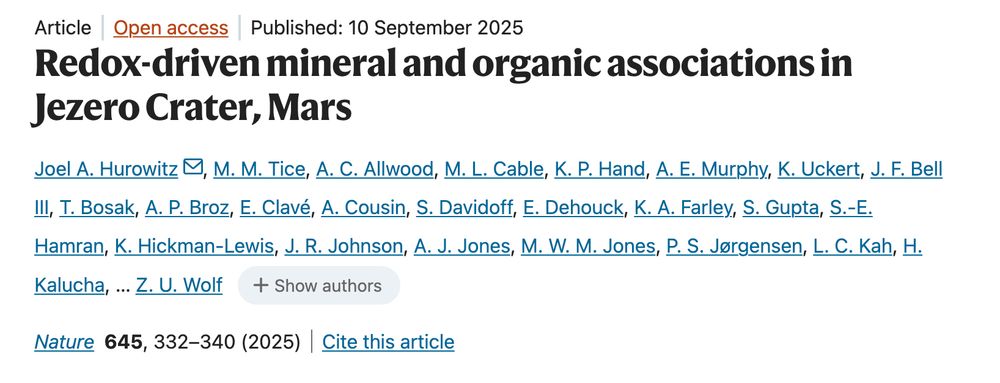
Nature research paper: Nanobody-based recombinant antivenom for cobra, mamba and rinkhals bites
go.nature.com/47qdigV
@gabolab.bsky.social
Research lab at CIC bioGUNE (Bilbao, Spain). Biosensors, biomolecular engineering and protein biophysics. www.cicbiogune.es/people/gortega

Nature research paper: Nanobody-based recombinant antivenom for cobra, mamba and rinkhals bites
go.nature.com/47qdigV

γδ T cells are a unique population of immune cells that can recognize and kill tumors.
A 2024 #ScienceReview explores current research efforts focused on how γδ cells naturally discriminate cancers from healthy tissues. https://scim.ag/3L4i3oU #ScienceMagArchives
¿Qué son y para qué sirven los biosensores?
Aquí hablo de ello en #BioEnredados el podcast de divulgación científica de @cicbiogune.bsky.social
Enjoy!

Structures from AlphaFold3 - while often impressively good - tend to fail representing the dynamic ensembles accurately. And often parts of the structure are not correct. Adding experimental data, directly in AlphaFold's diffusion step, provides physically realistic protein ensembles. This image shows two cases where AlphaFold3-only structures were largely improved by guiding with experimental data.
📢 New preprint:
Experiment-guided AlphaFold3 resolves accurate protein ensembles.
doi.org/10.1101/2025...
AlphaFold3 is incredible, but has crucial limitations: it typically collapses to a single conformation, ignoring the inherent dynamics of proteins. And it can be wrong. Here's a solution. 🧵👇

A Nobel medal
BREAKING: The Nobel Prize in Physics has been awarded to John Clarke, Michel H. Devoret, and John M. Martinis "for the discovery of macroscopic quantum mechanical tunnelling and energy quantisation in an electric circuit"
Stay tuned for more.

‼️Premio Nobel de Física 2025 a los descubridores del efecto túnel cuántico macroscópico www.eldiario.es/1_c1383c?utm...
07.10.2025 09:54 — 👍 26 🔁 17 💬 1 📌 1⚫Hoy decimos adiós a la primatóloga Jane Goodall.
Maravillosa su entrada el pasado mes de abril en @larevueltafans.bsky.social, enseñando a Broncano a hablar chimpancé.
D.E.P.
www.rtve.es/noticias/202...
Placental organoids, cool!
25.09.2025 19:24 — 👍 0 🔁 0 💬 0 📌 0
Mainly surface-exposed residues throughout the entire scaffold, lots of threonines, and some asparagines and glutamines (hydration?)
25.09.2025 18:25 — 👍 1 🔁 0 💬 0 📌 0Interesting!
Although perhaps not that surprising to me. We found that we can engineer up to 10% of the amino acids in the framework to improve their production and stability without affecting binding (granted, nanobodies are simpler...)
bsky.app/profile/gabo...

"Adapting ProteinMPNN for antibody design without retraining"
Our several-years-old fix to ProteinMPNN's tendency to make weird antibody CDR sequences is finally preprinted
Thanks to the researchers at @cicbiogune.bsky.social!
Congrats to my awesome—and Bluesky-less—PhD student Alba Pejenaute, and special thanks to Gonzalo Jiménez-Osés and Francesca Peccati from the Computational Chemistry lab, for guiding us in our first excursion into AI and protein engineering.
This approach makes nanobody-based therapies & diagnostics cheaper, more reliable, and scalable.
And by focusing on the scaffold we achieve a general recipe easily transferable to other nanobodies without the need for (painful) binding screening!
With just a few smart mutations in the scaffold, we achieved:
🧪 Up to 5x higher yields
🚑 Rescue of nanobodies that were previously impossible to produce
🔥 Greater stability (+4–6 ºC)
🎯 Preserved strong binding to targets
🧩 Conserved across different nanobodies
🦙 Nanobodies are tiny antibodies coming from llamas & camels.
They’re small, stable, and can reach tricky spots that normal antibodies can’t. That makes them promising for medicine, diagnostics, and even biotech.
But: they’re not always easy to produce in large amounts.

🚨 New paper alert!
We used AI to make nanobodies more stable, easier to produce, and just as effective at binding their targets.
🔗 Gift link here:
academic.oup.com/peds/advance...
Still boggles my mind that we can leave frameworks as-is and only edit CDRs and still reliably get nM binders. Complete opposite of what I would have expected given how hard it is to graft CDRs from one FW to another (such as humanizing mouse mAbs). First RFantibody and now this
25.09.2025 02:07 — 👍 11 🔁 3 💬 1 📌 0
In another preprint from the @brianhie.bsky.social Lab and @synbiogaolab.bsky.social, they introduce Germinal, a generative AI system for de novo antibody design.
Germinal produces functional nanobodies in just dozens of tests, making custom antibody design more accessible than ever before.
It’s gonna be a butchery.
As if the MSCA evaluation was not random enough…




Interesting discussion between Reviewer 1 and the authors of "Redox-driven mineral and organic associations in Jezero Crater, Mars" and whether the paper will attract media attention as evidence of past Martian life
doi.org/10.1038/s415...

BREAKING NEWS: NASA has found a potential sign of past life on Mars. www.nasa.gov/news-release...
10.09.2025 19:26 — 👍 279 🔁 106 💬 10 📌 32Amazing how Bindcraft just got published now, and yet it already was (or so is my impression) one of the most established and powerful tools for de novo protein design.
27.08.2025 19:34 — 👍 1 🔁 0 💬 1 📌 0Predicting Experimental Success in De Novo Binder Design: A Meta-Analysis of 3,766 Experimentally Characterised Binders https://www.biorxiv.org/content/10.1101/2025.08.14.670059v1
15.08.2025 03:48 — 👍 6 🔁 3 💬 0 📌 1
What is this marvel of the universe?🤯
www.nature.com/articles/s41...

The American Chemical Society announced Luis M. Liz-Marzán, a leader in the colloidal synthesis of metal nanoparticles, as the recipient of the first Dong Qin ACS Award in Nanochemistry. cen.acs.org/acs-news/Lui... #chemsky
24.08.2025 20:39 — 👍 6 🔁 1 💬 0 📌 0Las respuestas a este hilo son oro 🤣
22.08.2025 06:58 — 👍 2 🔁 0 💬 0 📌 0El Camino, de Paulo Coelho.
Si ya me atraía poco lo de hacer el camino de Santiago, después de leer este tostón menos aún.

Have no fear if you weren't in the packed audience this week for @martinpacesa.bsky.social's awesome seminar, because you can check out the recording 👇
youtu.be/qQihl6If9vU

(1/7)
Training biomolecular foundation models shouldn't be so hard. And open-source structure prediction is important. So today we're releasing two software packages: AtomWorks and RosettaFold3 (RF3)
[https://www.biorxiv.org/content/10.1101/2025.08.14.670328v2](www.biorxiv.org/content/10.1...)
